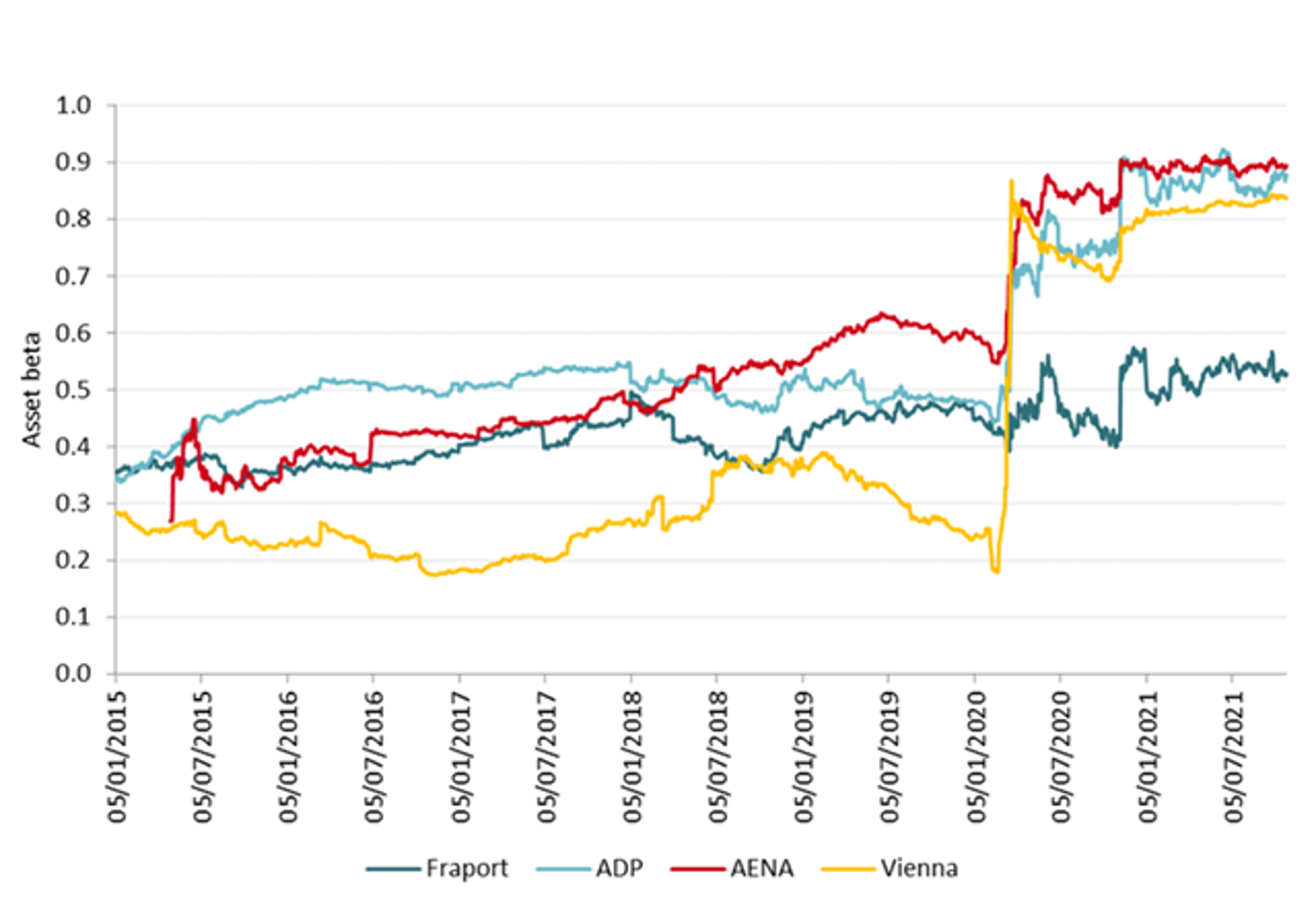Dan Elliott from Frontier Economics considers some of the immense challenges the global pandemic has created for those planning or regulating air transport infrastructure.
The aviation industry had grown used to short-term shocks. After both 9/11 and the global financial crisis of 2008, air travel came back, more or less on track, relatively quickly.
But the industry had never seen anything like COVID-19, which in 2020 led to an almost hard-stop on aviation in April and a two-thirds reduction in worldwide air passengers numbers year-on-year. And since then, one hopeful forecast of recovery after another has been confounded.
That’s not surprising, perhaps, given the difficulty in forecasting the course of the pandemic. All business planning is beset by this still open question. But for the airport industry, it is particularly challenging.
Airport capacity cannot be created overnight. It takes decades to make plans, gain government and public approval, and construct runways and terminals. And while capacity needs to be there to meet demand, putting it there too far in advance is a road to financial ruin.
Add to that the workings of price regulation regimes (or concession agreements that limit movements in charges), and it’s clear why long-term visibility on volumes and costs is critical to the management of airport businesses.
This creates its own feedback loop to the financing of airports: there is a narrow path to viability, exceptionally dependent on reliable forecasting.
It’s still unclear whether vaccines and drug treatments have definitively changed the threat posed by COVID. And even if (or, hopefully, when) it becomes clear the pandemic has simply become another endemic disease, it will not be easy to judge how much this virus has changed the world.
Plenty has, of course, already been written on this; most of it, seemingly, by Mystic Meg. In truth, only fortune tellers, rather than economists, would risk point forecasting in the current murk. But economics can still help bring some discipline to this struggle with uncertainty.
Traditional forecasting models have been based on the remarkably durable relationship between economic growth, demand for air travel and air fares. Now the forecasting challenge has changed, so should the economic framework.
Signs of four
Four factors, caused by or concurrent with COVID, can be expected to have moved the goalposts. First, lockdown has pushed us further into the virtual world. How far, is still not clear: ever since the development of the internet and mobiles, strategists and sociologists have been predicting a steep reduction in business travel.
But before the pandemic, the numbers had been defying the most severe predictions, even suggesting that online and physical interactions in business were complementary rather than alternative activities.
However, the quality of online meeting software, and business experience with it, have developed radically since the beginning of 2020. Bill Gates’s famous prediction last year that business travel would fall by 50% has been challenged by many, but some substitution of video calls for physical journeys seems likely to have become embedded.
This, in turn, is likely to push up prices for holiday travellers, who are cross-subsidised by those who turn left on boarding, putting further downward pressure on demand.
Second, aviation, like any other sector responsible for substantial CO2 emissions, is facing a future of higher abatement costs. These will be imposed by government actions such as the European Union’s Emissions Trading System, and by embracing new fuels such as biofuels, SAFs and hydrogen, perhaps even electric power eventually, again leading to higher fares.
However, while basic economics suggests these first two factors will cause a downward shift in the demand for air travel, they will not necessarily disconnect its relationship with economic growth.
Third, environmental concerns may have ‘non-price’ effects on customers, governments and businesses, curtailing air travel. So far, travellers have both proved pretty insensitive to ‘shaming’ pressures. However, requirements to report company plans for progress towards net zero, may now begin to alter business behaviour.
Fourth, underlying economic growth is itself much more open to question. Supply-side constraints have helped fuel inflation, creating a dilemma for monetary authorities. Economic management in the post-COVID world is presenting unfamiliar challenges, perhaps particularly, but by no means only, in post-Brexit Britain.
Plans B, C, D and …
So here are some things we do at Frontier Economics to make planning more fit for present purpose:
- Rather than pretend we can forecast air traffic precisely, plans have to be based on multiple demand scenarios, and the appropriate responses, enabling development to be ramped up or down as events unfold.
- Flexible approaches are needed, shifting the balance of short-term plans from capacity investment to operating solutions
- Projects should be valued using ‘real options’ methodologies, for example, ascribing appropriate value to opportunities to halt or accelerate them, similar to the way in which values are ascribed to financial options.
To do this kind of planning well, airports need to get better at understanding the long-run relationship between (operating and capital) costs and demand–- that is to say, get better at measuring the ‘elasticities’ or extent to which each moves in response to changes in the other.
Short (one-to-two-year) and long-run (five-to-ten-year) elasticities are typically very different. Only a thorough analysis of both will enable scenario planning to be truly ‘evidence-based’.
The nature of the disruption has made the airport industry much riskier, both operationally and financially. With the onset of the pandemic the asset beta of airports, a measure of market risk without the impact of debt, jumped sharply, in some cases even doubling. And with no sign of this returning to pre-pandemic levels, airports will be experiencing higher costs for financing for the foreseeable future.

Unless the regulators do something to counter-balance/mitigate this increased risk, the cost of financing airports will rise substantially. So then, inevitably, would airline costs and subsequently the price of tickets.
Some regulators have recognised the need to be much more explicit about the appropriate level of risk, as the UK’s Civil Aviation Authority (CAA) has done with respect to London Heathrow.
Pricing mechanisms are needed to share this risk if it moves outside an acceptable range. The CAA is proposing to use Heathrow’s regulatory asset base as a buffer for future demand shocks. But such adjustments need to be long-term: regulatory mechanisms that push up charges just as demand falls are exactly the opposite of what is required.
When the crunch comes
Before the pandemic, EUROCONTROL projections indicated a major capacity crunch for European airports in the 2030s. Indeed, pre-COVID, it projected that up to 1.5 million flights – the equivalent of 160 million passengers – would be unable to fly by 2040.
This prospect may have been deferred, but it is hard to say for how long. So, it is essential to get on, not only with developing planning tools that allow for greater short-term flexibility, but also to embed well-working market mechanisms in regulatory structures.
These should be directed towards efficient rationing of scarce capacity ¬– necessarily requiring reform of the slots system – and underpinning the financing of additional capacity.
If we wait until the fog has cleared for the take-off of reform, that will be months, if not years, too late.




